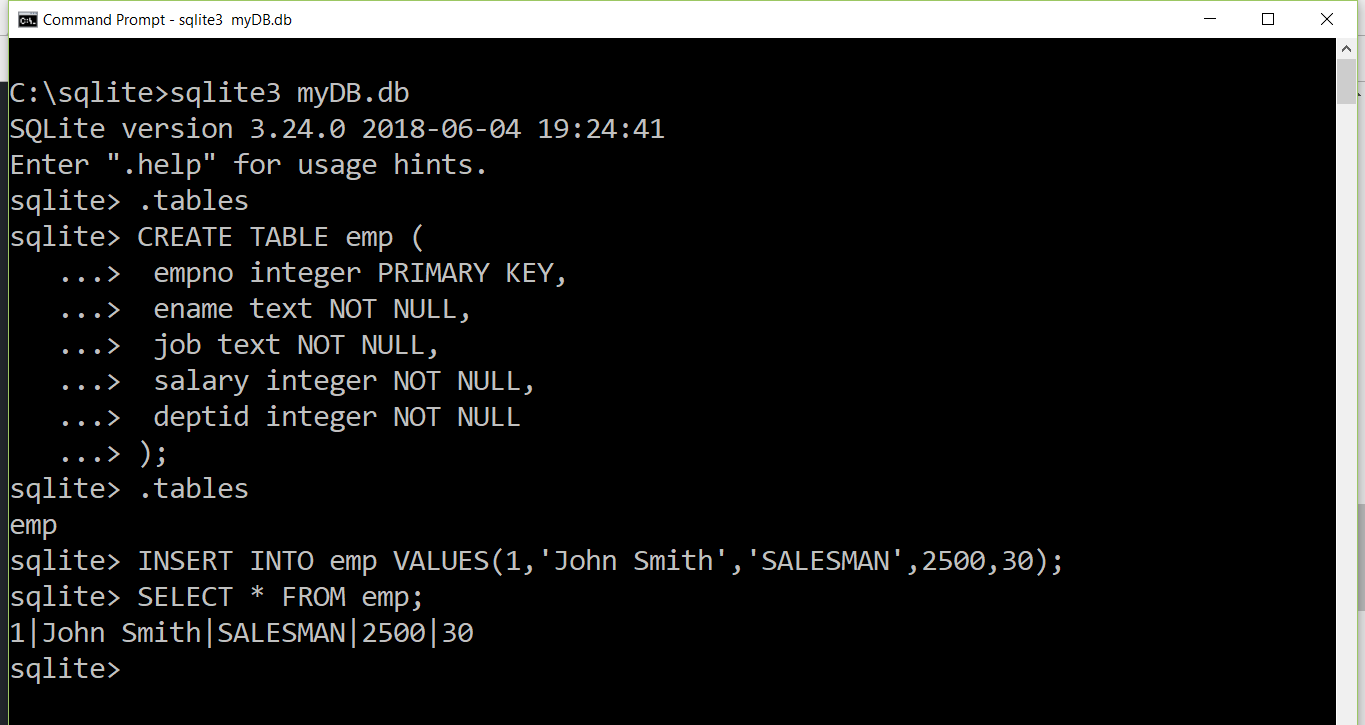

FMDB will figure out which you are using at compile time and do the right thing. You can use either style in your Cocoa project.
Cocoa sqlite tutorial manual#
Automatic Reference Counting (ARC) or Manual Memory Management? product( name: "FMDB ", package: "FMDB ") FMDB Class Reference: : I think… I haven't actually checked or tested this. Perfect! : Technically RSQLite is a separate package, but it's a dependency of (), which is as important as base R in my book.
Cocoa sqlite tutorial install#
tl dr version: (1) install an SQLite ODBC driver, (2) install an ODBC manager, (3) use the manager to configure the SQLite ODBC driver and connect to an existing SQLite database, and (4) connect to the SQLite database through ODBC with LibreOffice Base.

Magic! Even though there are 10 steps, it's not too difficult. Create a table, insert some records, and open the SQLite file in a GUI program to see all the changes. Create new tables and forms using LibreOffice: !(ugly_form.png "Super ugly example form") Any time you save, all edits will occur on the SQLite file. This is fine-it's not actually saving the database, just the accompanying form data. Click on "Finish." LibreOffice will prompt you to save an `.odf` database. If you click on "Browse…", you should see the name of the SQLite database you set up as a DSN earlier. Click next to select which ODBC database to load. In the wizard, select "Connect to an existing database" and choose "ODBC": !(base_wizard.png "LibreOffice Base wizard") 8. Open LibreOffice and create a new Base database. The SQLite file is now accessible in any program that uses ODBC.
Cocoa sqlite tutorial full#
Create a new key named "database" and use the full absolute path to the SQLite database file as the value: !(dsn_setup.png "DSN setup dialog") 6. Add a new driver using these settings: !(driver_setup.png "Driver setup dialog") 5.

There are two that work equally well: () and (). Prior to OS X 10.5, Apple included one of these, but for whatever reason they stopped with Snow Leopard. The page includes a link to a precompiled version ( currently it says “Steve Palm kindly provided a build of version 0.9993 for MacOSX 10. Download the SQLite ODBC driver for OS X.Add some tables to it, or don’t-it doesn’t matter. Create a new SQLite database using sqlite3 in Terminal (or even easier, use a GUI program). There are official instructions for doing this on Linux and Windows, but there’s nothing about doing it in OS X. The solutionįortunately there’s a way to use an SQLite database as the backend for LibreOffice Base using an ODBC driver, giving the best of both worlds: an open, universal, Java-free database behind a customizable form-based GUI. LibreOffice Base has excellent support for database-backed forms, but under the hood, LibreOffice uses the Java-based HSQLDB, which does not have native R and Python support and requires older Java runtime environments. I could use Python to program my own GUI (or even get fancy and learn Swift and make a native Cocoa app), but that seems like an excessive amount of work. There are plenty of SQLite viewers, but I haven’t found any that let you create Access-like forms. 1 Technically RSQLite is a separate package, but it’s a dependency of dplyr, which is as important as base R in my book.


 0 kommentar(er)
0 kommentar(er)
